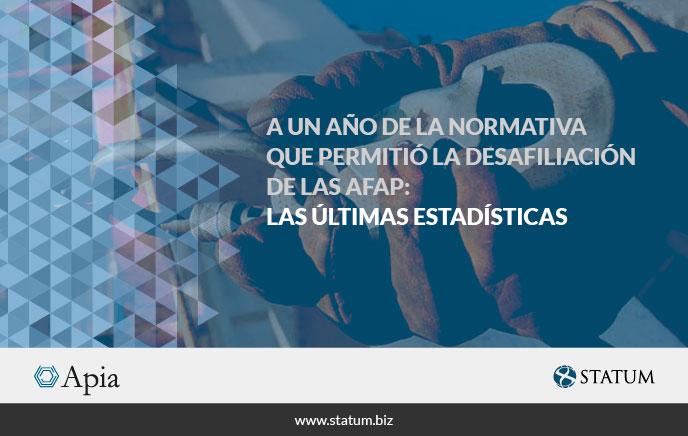A un año de la normativa que permitió la desafiliación de las AFAP: las últimas estadísticas
Resumen:
En febrero de este 2015 se cumple un año de la habilitación de la ley Nº 19.162 que entró en vigencia el 1º de febrero del 2014 y que permitió la desafiliación de las AFAP (Administradoras de Fondos de Ahorro Previsionales) a aquellos usuarios que integraran el sistema mixto de jubilaciones y pensiones.
Información:
En los últimos 12 meses, ha habido un total de 8.098 personas que optaron por la desafiliación de las AFAP para volver al antiguo régimen de jubilaciones.
No obstante, de estos 8.098 usuarios que anularon su inscripción de las administradoras, hay 6.219 individuos que no abandonaron el sistema mixto, es decir, sus cuentas aún permanecen abiertas. Esta población podría volver a aportar a las AFAP en caso de que su salario se encuentre por encima del tope establecido, que actualmente se ubica en los $39.871.
Los 1.879 individuos restantes, optaron por anular su afiliación de las AFAP ya que contaban con 40 años o más a la hora de establecerse el sistema de aportes mencionado.
Ha habido un total de 31.086 personas que agendaron una reunión en los últimos 12 meses para ser asesoradas sobre qué tipo de sistema resultaba más conveniente. Sin embargo, de este número, hay unas 21.631 personas a las que se les venció el plazo de 90 días, el cual es el límite de tiempo estipulado para rectificar su pertenencia a las AFAP. En todos los casos se archivaron los trámites y de esta manera, continúan aportando a las administradoras.
Estos individuos tendrán solamente una nueva oportunidad para recibir el asesoramiento del BPS (Banco de Previsión Social) y decidirse por un tipo de jubilación u otra.
Si bien el número de las desafiliaciones es menor al esperado, las autoridades del BPS han destacado que los usuarios actuaron con mucha racionalidad, subrayando además que los rangos de edades determinaron las consultas presentadas. Mientras que la población cercana a los 50 años se mostró interesada en definir su situación jubilatoria, no así la población que ronda los 40 años, la cual tendió a concebir el tema de las pasividades como algo lejano.
Lo importante de esta nueva ley es que otorgó a la ciudadanía la posibilidad de revisar su situación y también conocer la forma en que estaba realizando sus aportes. Con la adquisición de este derecho, STATUM es nuevamente partícipe de la creación y puesta en marcha de herramientas capaces de intervenir positivamente en las nuevas necesidades de la sociedad civil y de los organismos del Estado.
El derecho a consultar cada situación en particular abarcó específicamente a tres colectivos, divididos de la siguiente manera: en primer lugar, aquellos que se afiliaron por decisión propia y que deseaban abandonar el régimen de las AFAP, compuesto por trabajadores que tenían 40 años o más en abril de 1996 (año en el que se introduce la normativa de ahorro individual obligatorio). El otro grupo está conformado por aquellos individuos que optaron por aportar al régimen mixto (AFAP y BPS) destinando un 50% de su salario a la AFAP y el otro 50% al BPS. Esta población puede revocar el aporte mixto en caso de estar comprendida entre los 40 y 50 años. El tercer grupo incluye a otros colectivos que por algún motivo u otro fueron obligados a afiliarse y que en consecuencia, las AFAP podrían estar ocasionándoles pérdidas.
Para que el usuario conozca cuál de ambos sistemas es el más conveniente, se realiza un análisis de la trayectoria laboral del afiliado y una simulación capaz de proyectar las eventuales prestaciones a las que podría acceder según la decisión que adoptase.
El plazo establecido para asesorarse en el BPS y consultar la conveniencia de cada régimen en particular, es hasta el 31 de enero de 2016.





Comentarios (0)
Deja un comentario